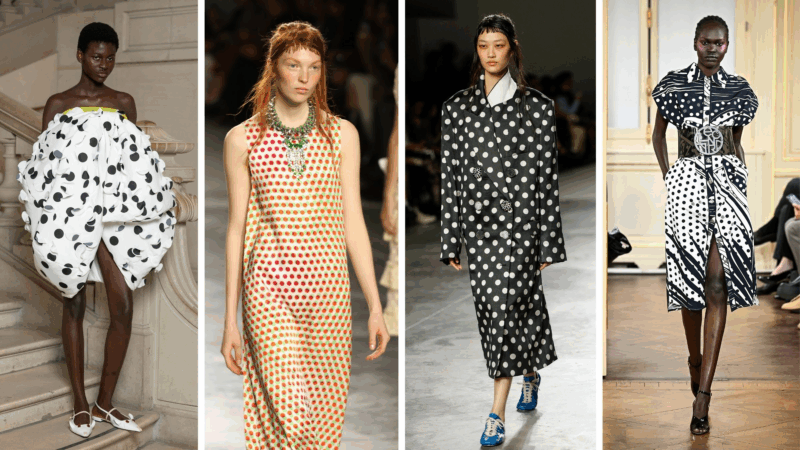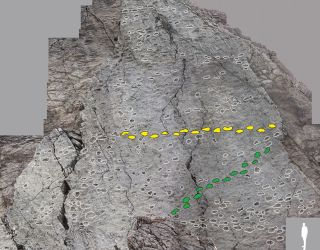Here’s how the fashion industry is using AI to predict the next big trend
Predicting what matters in fashion was once an elite sport, the province of those who attend those big runway shows in New York, Milan, London, and – right now – Paris, like the editors of influential magazines. (A line from 2006’s The Devil Wears Prada, about Miranda Priestly, a tyrannical fashion editor, conveys the idea succinctly: “You still don’t get it do you? Her opinion is the only one that matters.”)
While elite opinions continue to carry weight, the trend prediction game has expanded enormously over the past decade. Platforms like TikTok, Instagram and Pinterest are redefining how trends spread. According to a report from the data company Launchmetrics, more than 40% of global consumers purchased apparel and accessories at least three times via social media in 2024.
“There is more information available, certainly,” said Amy Sullivan, vice president of buying and private brands at the online fashion retailer and styling service Stitch Fix. “And I think the trends because of social media move faster.”
With so much data floating around, fashion industry players are leaning on AI in order to remain competitive.
Sullivan said AI recently helped her team decide whether to go with a red or blue stripe shirt for next Spring.
“In the past, to answer that question, you either make a spot decision without really looking at it, or you’re requesting samples from vendors overseas that could take weeks and cost a lot of money,” Sullivan said. “But when this happened a few weeks ago, we just put it into AI and you can actually see it in a full on-body image and make the right decision.”
They went with the blue.
How AI is used to make predictions
AI algorithms are helping the fashion industry on a number of fronts including the creation of personalized customer experiences, such as allowing customers to “try on” clothes virtually, supply chain management, and image generation. Its use in figuring out what’s likely to fly off racks next season involves mining data from many different places.
“Our models track everything from runway shows to social media,” said Noémie Voyer, the fashion expertise lead at Heuritech. The Paris-based company works with such brands as New Balance, Skims and Prada. “We have a massive scale of data that allows our AI to detect early signals of trends – sometimes months before they become visible on the mainstream market.”
Voyer said her company’s algorithms successfully predicted a bunch of emerging trends for next year. Examples include dotted prints, the flat-thong sandal and the color yellow. These trends have all shown up on runways at this year’s fashion weeks. Eventually, they’ll appear in Target and H&M.
But Voyer and the other sources NPR spoke with for this story all agree that AI cannot do fashion prediction on its own.
“While our AI is extremely sophisticated, the human [aspect] still remains essential,” Voyer said.
Human expertise is still necessary
“We can use AI to supercharge what we do,” said Francesca Muston, chief forecasting officer at the global consumer trend forecasting company, WGSN, which counts Levi’s and Coach among its clients. “But you have to really start putting a lot of rigor and a lot of process into what you’re doing.”
Muston said AI is excellent at efficiently predicting things like how much of a popular item a retailer should stock. But she said her company’s human experts have to ensure the information the AI provides doesn’t lead to the wrong conclusions.
“When you are looking online at social media, trends can blow up and feel huge,” Muston said. “But entertainment and commerciality are two different things.”
Muston said it’s one thing for an entertaining fashion post on social media to get a lot of engagement. But it’s quite another for someone to go out and buy the featured item: “Are they actually going to go away and spend some money and wear it to the bar after work?”
FBI Deputy Director Dan Bongino says he will step down in January
Bongino's tenure was at times tumultuous, including a clash with Justice Department leadership over the Epstein files. But it also involved the arrest of a suspect in the Jan. 6 pipe bomber case.
Federal court says troops can stay in D.C., and hints at prolonged deployment
A federal appeals court in Washington, D.C. has ruled that National Guard troops can remain in the city for now. That decision comes after a different federal appeals court ruled that troops must leave Los Angeles earlier this week.
Jack Smith defends his prosecutions of Trump in closed-door session in Congress
The former Justice Department special counsel told the House Judiciary Committee that his team developed "proof beyond a reasonable doubt" that Trump took part in a criminal scheme to overturn the 2020 election.
A Chinese man who filmed secret footage in Xinjiang risks deportation from the U.S.
Guan Heng sailed to the U.S. by boat from the Bahamas after publishing footage he filmed of purported detention camps in China. He has been held in immigration detention since August.
‘Harry Potter’ fans are flying to Broadway to see the original Draco Malfoy
Almost eight years after Harry Potter and the Cursed Child opened on Broadway, Tom Felton, who played Draco Malfoy in the films, is now playing him as an adult onstage.
A photographer discovers miles of dinosaur tracks near Italy’s Winter Olympic venues
A nature photographer stumbled upon thousands of 210-million-year-old dinosaur tracks in Italy's central Alps, near where some Olympic skiing and snowboarding events will be held in February.









